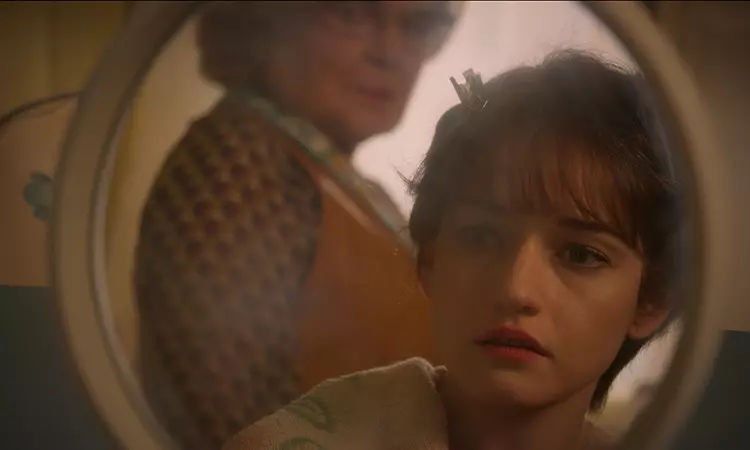In 1965, the vibrant streets of New York City serve as both a backdrop and a character in the chilling prequel to the iconic horror film, Rosemary’s Baby. The new narrative, titled Apartment 7A, delves deep into the events leading up to Rosemary’s eventual haunting experience within the storied Bramford apartment building. This prequel is not merely a rehash of what fans already know; rather, it explores the darker undertones and untold stories that populate this seemingly glamorous setting.
At the heart of Apartment 7A is Terry Gionoffrio, an aspiring dancer whose dreams sparkle as brightly as the city lights, yet whose journey is plagued with misfortune. Initially poised for success, Terry’s aspirations come crashing down following a tragic injury. This setback proves significant, not only for her personal trajectory but also in establishing a thematic resonance throughout the film—one that intertwines ambition with vulnerability.
As Terry finds refuge in the Bramford, she meets a wealthy couple, embodying both hope and a sense of foreboding. Their grand lifestyle masks a sinister undercurrent, prompting viewers to ponder the lengths individuals will go to in the pursuit of their dreams.
An intriguing twist comes when a prominent Broadway producer, already residing in the Bramford, offers Terry another shot at stardom. While the prospect of revival is alluring, it casts a long, dark shadow over her fate. This juxtaposition serves as a critical turning point in the narrative. The viewer is left to question whether the opportunities presented are genuine or laced with a more sinister intention.
As it compellingly intertwines personal ambition with horror elements, Apartment 7A invites the audience to reflect on the societal pressures surrounding fame and success. It challenges the notion of opportunity and the moral compromises that often accompany it.
The Bramford’s opulent yet eerie ambiance plays a crucial role in shaping the story’s mood. With an architecture steeped in history and hints of malevolence lurking within its walls, the building itself emerges as a significant character. This setting enhances the psychological tension, drawing viewers into a world where dreams are both supported and suffocated.
Through lush cinematography, the film creates a visual language that resonates with horror, wrapping viewers in a cocoon of unease as they navigate Terry’s journey. The juxtaposition of New York’s bustling streets against the isolating confines of the luxury apartment underscores the film’s central theme: ambition can often be fiercely isolating.
Apartment 7A serves not just as a prelude to a terrifying legacy but also as a fresh exploration of ambition, vulnerability, and the insidious nature of desire. By focusing on an underrepresented narrative in the shadow of Rosemary’s Baby, the film doesn’t merely seek to capitalize on its predecessor’s success but instead offers a lens into the complexity of human aspiration. Just as Terry grapples with her dreams and the moral choices they entail, audiences are left questioning their own desires as they navigate the intricate layers of this eerie urban tale. As anticipation builds for its release, Apartment 7A promises to expand the lore of the Bramford, melding horror with poignant human experience.

